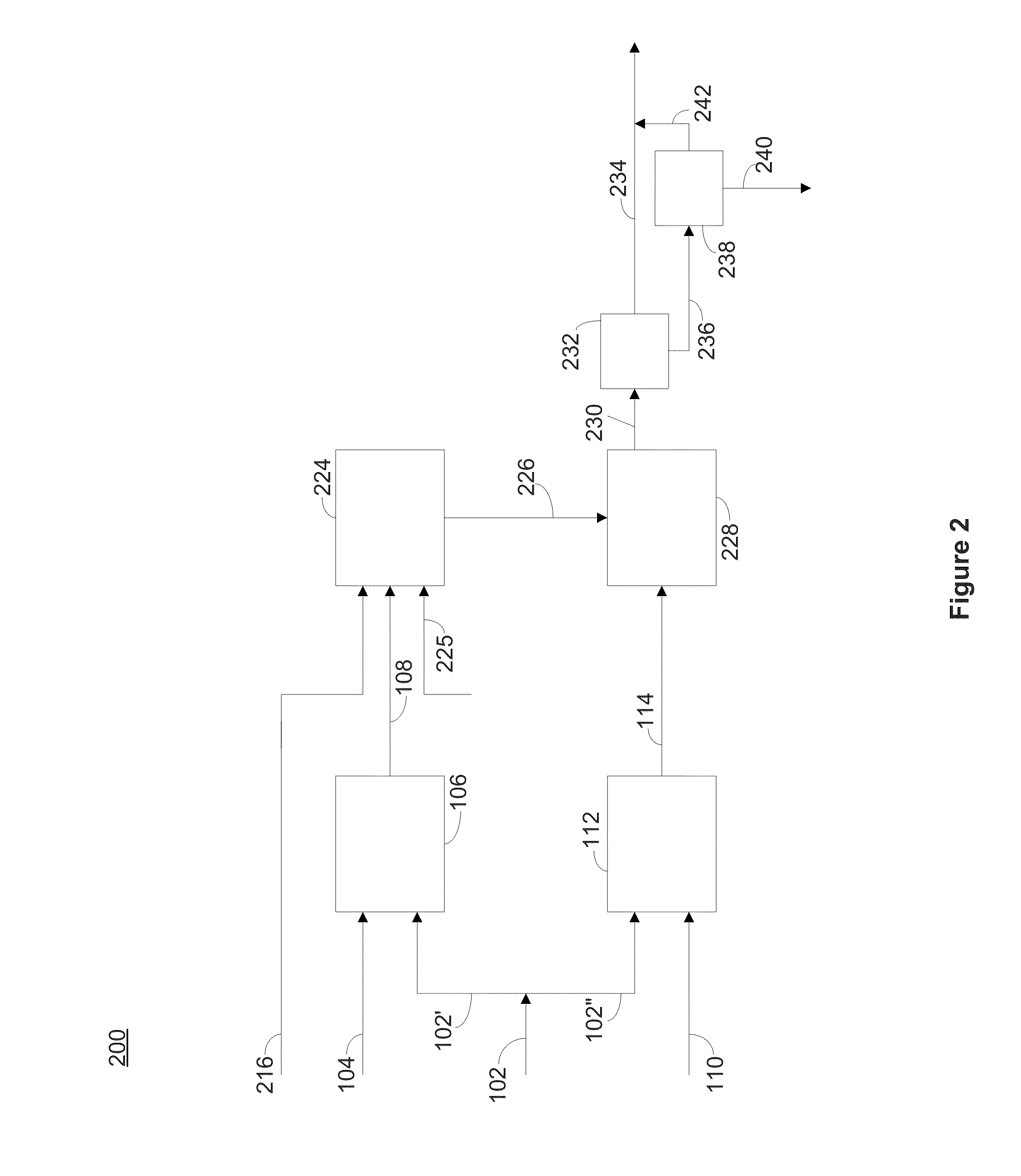Treated Geothermal Brine Compositions With Reduced Concentrations of Silica, Iron and Lithium
a geothermal brine and composition technology, applied in the direction of lithium compounds, silicates, well accessories, etc., can solve the problems of affecting the quality of brine, scaling and deposition of solids, and not previously being commercially exploited well
- Summary
- Abstract
- Description
- Claims
- Application Information
AI Technical Summary
Benefits of technology
Problems solved by technology
Method used
Image
Examples
example 1
Selective Removal of Silica Using Aluminum Salts
[0295]A simulated brine was prepared to mimic the brine composition from exemplary Salton Sea deep test wells (post reactor crystallizer clarifier system), having an approximate composition of 260 ppm (mg / kg) lithium, 63,000 ppm sodium, 20,100 ppm potassium, 33,000 ppm calcium, 130 ppm strontium, 700 ppm zinc, 1700 ppm iron, 450 ppm boron, 54 ppm sulfate, 3 ppm fluoride, 450 ppm ammonium ion, 180 ppm barium, 160 ppm silica (measured as silicon dioxide), and 181,000 ppm chloride. The silica was added to the brine as acidified sodium silicate solution, with the target of a concentration of about 160 ppm, the anticipated value for the test well brine, after undergoing a clarifying process to partially remove silica. The pH of the simulated brine was between about 3 and 4, and was subsequently adjusted with sodium hydroxide or other suitable base.
[0296]To enhance separation of the aluminosilicates from the brine once precipitated, aluminos...
example 2
Selective Removal of Silica Using Ferrous Iron
[0298]A simulated brine was prepared to mimic the brine composition of test wells found in the Salton Sea, having an approximate composition of about 252 ppm lithium, 61,900 ppm sodium, 20,400 ppm potassium, 33,300 ppm calcium, 123 ppm strontium, 728 ppm zinc, 1620 ppm iron, 201 ppm boron, 322 ppm sulfate, 3 ppm fluoride, 201 ppm barium, 57 ppm magnesium, 1880 ppm manganese, 136 ppm lead, 6 ppm copper, 11 ppm arsenic, 160 ppm silicon dioxide, and 181,000 ppm chloride. The simulated brine (1539.2 g) was sparged with air for about 60 minutes, during which time pH was measured. A calcium hydroxide slurry having 20% solids by weight was added dropwise after 60, 90, and 120 minutes (total weight of the calcium hydroxide slurry added was 13.5 g; calcium hydroxide was 2.7 g dry basis) to the solution. The pH was monitored throughout the reaction and was initially allowed to fall, and was then adjusted to a pH of about 5 with the addition of cal...
example 3
Selective Removal of Silica Using Activated Alumina
[0299]A 50 mL brine solution having approximately 180 ppm dissolved silica was passed through a 2.5 cm diameter column filled to a depth of 20 cm and containing approximately 0.5 g activated alumina and about 1.2 g water. The silica preferentially adsorbed onto the alumina and was removed from the solution. The activated alumina had a surface area of about 300 m2 / g and a grain size of between about 8-14 mesh (˜2 mm diameter). The total bed volume was about 102 mL. The temperature during the step of contacting the silica containing brine and the activated alumina was maintained between about 90 and 95° C.
[0300]The concentration of silica in the brine was monitored by measuring monomeric silica using the molybdate colorimetric method and using Atomic Absorption for total silica. Silica values were significantly lower in the exit solution due to adsorption of the silica on the activated alumina. Saturation of the activated alumina in t...
PUM
| Property | Measurement | Unit |
|---|---|---|
| Dimensionless property | aaaaa | aaaaa |
| Dimensionless property | aaaaa | aaaaa |
| Dimensionless property | aaaaa | aaaaa |
Abstract
Description
Claims
Application Information
 Login to View More
Login to View More - R&D
- Intellectual Property
- Life Sciences
- Materials
- Tech Scout
- Unparalleled Data Quality
- Higher Quality Content
- 60% Fewer Hallucinations
Browse by: Latest US Patents, China's latest patents, Technical Efficacy Thesaurus, Application Domain, Technology Topic, Popular Technical Reports.
© 2025 PatSnap. All rights reserved.Legal|Privacy policy|Modern Slavery Act Transparency Statement|Sitemap|About US| Contact US: help@patsnap.com



